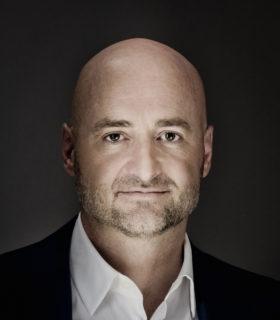Wealth Solutions & Wealth Planning
Asset Protection: Here today, still there tomorrow

Feb 8, 2023
No matter how rich you are, things change and sometimes go wrong. Political power can shift overnight. Lawsuits can strike like lightning. Business can tank. We have seen the consequences on the nightly news. Assets and bank accounts are seized or frozen. Operating companies can no longer conduct business, with supply lines blocked, vessels and airplanes grounded or confiscated. Keeping your wealth can be almost as hard as building it up. Wealthy individuals need sustainable asset protection and succession solutions to be able to navigate stormy seas.
By Marc-Andre Sola, Founder & Chairman, 1291 Group
I have been lucky to advise some of the wealthiest and most powerful families in the world. I’ve seen the mistakes they make, and it amazes me how they seem to be reading from the same old script. They use outdated structures that may have worked in a different time but fail to meet the challenges of today’s vastly more transparent world. Hackers and investigative journalists have given the public first, the Panama Papers, then came the Paradise Papers and, most recently, the Pandora Papers. As a result, families are exposed and family members and wealth placed at high risk.
In the following article I want to address:
- What is asset protection?
- What conditions need to be fulfilled for optimal protection?
- What strategies are commonly used and how effective are they?
What is asset protection?
Asset protection is the totality of actions you take to prevent your wealth from being taken from you. In centuries past an effective strategy may have been to hide assets under the mattress or in a different country shielded by banking secrecy laws. With inflationary, theft and fire hazards as well as space constraints, the mattress went out of fashion. In this brave new world of transparency and international data reporting and sharing, banking secrecy has also now become passe.
To stop illicit financial flows arising from terrorism, money laundering and tax evasion, the OECD and the G20 group of countries declared the end of banking secrecy in 2009. Laws were enacted in 2015 by the US and the OECD, called the Foreign Account Tax Compliance Act (FATCA) and the Common Reporting Standard (CRS), respectively. FATCA’s reporting requirements apply to foreign financial institutions with accounts held by US taxpayers, as well as foreign entities in which US taxpayers hold a substantial ownership interest. CRS was based on FATCA and similarly aimed at increased transparency and reporting on foreign accounts. Entities such as trusts, foundations and companies were now required to register and report the ultimate beneficial owner of the entity. Even in the US the Financial Crimes Enforcement Network (FinCEN) has now decided to install a central federal register of all ultimate beneficial owners of companies, trusts and other structures in order to effectively fight crime. For both FATCA and CRS, late or incomplete reporting, or failing to report altogether, can result in fines and other penalties. Significantly, individuals including managers, directors, trustees and other corporate officers can be held personally liable for non-compliance.
Currently, the conflict in Ukraine has increased the commitment of Western governments to uncover the true beneficial ownership of hidden assets and to create a more robust system of financial transparency and reporting. In the US this includes targeting efforts to use cryptocurrency to launder proceeds from corrupt activities.
It should be clear by now: Hiding assets, whether ill-gotten or not, no longer works as in the past. Furthermore, the advent of know-your-customer and anti-money laundering measures mean that you can only protect assets that are yours and are of legal origin. Hence, the name of the asset protection game today is to wrap wealth in a way in which privacy can be maximized, but it is still protected by law from being seized or confiscated, even if its existence is known to public authorities.
What conditions need to be fulfilled for optimal asset protection?
A solid asset protection plan allows you to maximize your privacy, while strictly adhering to financial reporting requirements. It protects your wealth from being confiscated, seized or included in a bankruptcy estate. In addition, it should allow you to optimize taxation (e.g., capital gains, withholding and estate taxes) as well as arrange succession. In my view a good asset protection plan must be flexible. Times, people, circumstances, laws and regulations change, which often requires an amendment of the chosen asset protection structure.
The issue of jurisdiction is also very important when implementing an asset protection structure. If things turn against you, it may not be possible to effectively protect your wealth in your country. Asset protection planning frequently involves the transfer of assets, ideally, to a jurisdiction with strong asset protection laws. Also, avoid putting all your eggs in one basket. It makes absolute sense to use different jurisdictions in different regions of the world.
What strategies are commonly used and how effective are they?
1. Nominee shareholder arrangements
One of the solutions often used in the Middle East, the UK, Canada and Asia is the use of a nominee shareholder. The nominee shareholder is a “hired signature” or someone that “lends his name” to you to act as the registered owner of shares in a company, when in truth, he only holds the shares for your benefit. The nominee shareholder arrangement is a way to mask the real owners and thus achieve privacy.
Obviously, in this arrangement the appointment of nominees must be made carefully, correctly and in writing (e.g., via a declaration of trust) in order for the original owner to retain all of the rights and benefits of owning the shares, such as the right to sell the shares, receive dividends, and vote at general meeting.
Nominee directors and shareholders are often family members or trusted friends of an entrepreneur, or professionals such as lawyers or accountants, and are often appointed together with nominee directors (persons who act as a director of the company on someone’s behalf). The nominee shareholder is usually the same person as the nominee director.
Such arrangements are not illegal, if used for legitimate reasons, and most importantly the existence and identity of the beneficial owner must be registered under the rules of public agencies such as inland revenue departments and accounting, banking, and corporate regulators.
In real life though, many families enter into a nominee arrangement with no written agreement and without reporting their beneficial ownership to government agencies, maybe even naming a nominee beneficial owner. The agreement is then based on trust only, so called handshake agreements. The problems normally start after some years have passed. In some cases, we have seen that the nominee shareholder actually forgot about the arrangement, or he died, and the heirs claim no knowledge of the arrangement nor was there any proof of the rightful claim of the original owners. Other dangers when appointing nominee shareholders: He or she can no longer be contacted for whatever reason, makes decisions deviating from what the original owners intended, demands substantial payments to continue the arrangement, refuses to return shares, and informs third parties about the agreement.
Of course, written agreements may be breached, but the cost in time and money will be substantially reduced with a proper one. So, get a written agreement and don’t forget to register beneficial ownership in accord with the rules of each jurisdiction. You stand to lose ownership or control of the shares without taking these measures. In the worst-case scenario, failure to report or filing a false, fraudulent or incomplete report is punishable with substantial fines and/or imprisonment. You may have protected your wealth from creditors by making it difficult for them to find and seize your assets when you hide behind a nominee unreported and undocumented, but the trade-off is not worth it. You will have ensured the anonymity of your shell company, but you will still have sleepless nights.
2. Limited Liability Companies
For an entrepreneur one powerful way to protect his or her assets is to form a business entity which has limited liability. This will allow the separation of personal assets from business assets. Limited liability companies (LLCs) are the most commonly used vehicles for the separation of assets and liability.
These companies are separate legal entities whereby the owner is not personally liable for claims against the business. If there are any lawsuits or liabilities which occur through the course of conducting business (e.g., being sued by a client, creditor claims, bankruptcy, etc.) the personal assets are protected and cannot be claimed.
Hence, from a bottom-up point of view, a company can provide solid asset protection. But, from a top-down perspective, the entrepreneur owns shares in the company and these shares can, depending on the jurisdiction, be easily seized in a proceeding against the owner.
3. Foundations
These are not widely used and have, as a result, been spared the scrutiny directed at trusts and corporations. Having said that, many countries are now requiring the registration of beneficial owners or the class of persons in whose main interest the foundation was set up. A foundation may not provide much privacy these days, but it can still protect assets by allowing the separation of legal ownership from the utilization of assets. It can free heirs and the following generations from the pressures of managing assets (through a professional foundation board or manager) while benefitting from the earnings. For clients with charitable or educational objectives, foundations are an excellent tool to achieve them, while providing a shield for donated assets.
4. Asset Protection Trusts
With a trust as is generally known, the owner of an asset (the settlor) enters into an agreement with another person (the trustee) to carefully manage the wealth and make distributions to a certain group of beneficiaries. Normally, the settlor remains in control as long as he is alive and can instruct the trustee without restriction, including changing beneficiaries, removing any property they have placed within it, or dissolving it whenever they want to. Such a trust is a fantastic estate planning tool but will not give you any asset protection since you remain the ultimate beneficial owner of the assets in the trust, and you can be forced to redeem them at any time. It does not create a barrier to lawsuits or other financial threats.
With an asset protection trust the situation is entirely different. The settlor decides to put a specified amount of wealth aside for his heirs (or a group of beneficiaries) and he wants to make sure that – no matter what happens – this part of his wealth is secured for beneficiaries. To achieve that he will have to irrevocably give up control and ownership. The trustee will then be in charge and his legal duty is to protect the interests of the beneficiaries, now and in the future. The settlor may receive an income from the trust but will not be able to transfer property from within the trust back out to himself. Nor can he dissolve the trust. He can, however, change successor trustees.
The assets of an irrevocable trust are no longer beneficially owned by the settlor and are not available to settle creditor claims, with immediate effect. This type of trust provides rock-solid asset protection, but there is not much room for change if circumstances change.
5. Pension Trusts
In most countries, pension trusts provide very effective asset protection. By law, pension benefits cannot be seized or claimed by creditors or bankruptcy estates. The legislative principle is that these funds need to be protected in order to secure retirement and the financial survival of the family.
Due to the nature of the pension trust, contributions and surrenders are often limited and so are investment options. In some countries, however, a pension trust can own shares in operating companies.
6. Life Insurance
Similar to pension trusts, many jurisdictions protect life insurance policies from being seized, confiscated or included in a bankruptcy estate. Again, the legal system wants to protect surviving family members. In all countries this is a popular topic and therefore supported by politicians of all stripes.
Another great advantage of life insurance policies is that they normally grow tax preferred. Other advantages are that they allow flexible distributions and can be used as a collateral for loans. In some jurisdictions life insurance policies allow you to invest the cash value according to a tailor-made investment strategy, which can include private equity and real estate.
Conclusion
In a transparent and hyper-litigious world, real asset protection is key. It can only be achieved if the various legal entities in an asset protection plan operate in accordance with the laws in fulfilling the objectives of the plan’s creator. Only then can it truly provide legal protection from confiscation or attachment. While different arrangements or structures are available, careful evaluation of the pros and cons is required. This is only possible if your goals and needs, as well as relevant facts and circumstances, are well-understood. Existing structures may also be outdated. Things change and yesterday’s plan may need a second look by an experienced advisor.

More from Marc-Andre Sola, 1291 Group
Latest Articles






